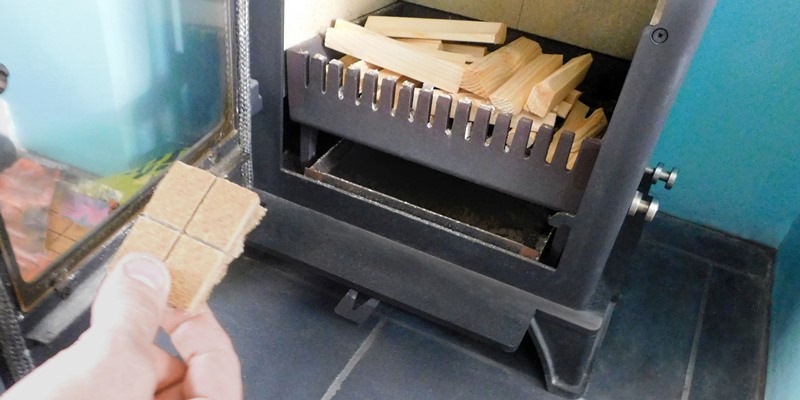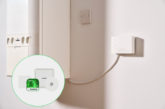
Whilst many homeowners remain reliant on gas or electric heating, Calvin May, Head of Technical Services for biomass and fuel standards organisations HETAS and Woodsure, is urging installers to be equipped with the knowledge on the variety of solutions available when delivering heat to key rooms within the home.
Last winter, we saw an increase in demand for solid fuel heating. According to the recent BEIS Public Attitudes Tracker, the use of gas central heating has dropped to 57% (down from 78% the previous year). This suggests a shift in behaviour from heating methods which heat the whole home to those that can be used to target individual rooms.
When it comes to heating one room, there unfortunately isn’t a simple ‘one size fits all’ answer. The decision on how best to heat our homes will depend on a variety of factors. This is where heating engineers and installers alike will play a pivotal role in supporting their customers to understand the best solutions available to them.
With energy bills and low carbon heating high on the agenda, solid fuel heating appliances offer a cost-effective solution when looking to heat just one room. With a multitude of options available on the market, installers will need to take a whole host of factors into account including: the age and construction of the property; the types of windows and insulation the home has; whether there is an existing chimney; and where the customer would like the new stove located.
Room heating considerations
Installers can support homeowners to make more informed choices during an on-site assessment survey. One of the main considerations to take into account would be sizing the appliance correctly for the room in which it is situated to maximise heating efficiency.
Oversizing of an appliance simply to satisfy the aesthetics of a larger existing recess/fireplace chamber will mean that users may be tempted to turn down the appliance to levels outside of those recommended by the appliance manufacturer, which may result in incomplete combustion. Using the stove in this way also increases the risks of creosotes being formed in the flue, resulting in chimney fires or blockages if operated outside of the air control guidelines set by the appliance manufacturer.
Another consideration is whether the home already has underfloor heating (UFH) installed. Any solid fuel appliance will require a hearth upon which it’s installed. Due to the complexities with the associated pipework underneath, we would not advise positioning a solid fuel heating appliance alongside this setup as the additional material may have an adverse effect on the pipes or cabling below.
Installers should advise homeowners to speak to their UFH manufacturer to determine whether any system can take both the temperatures and weight that a solid fuel heating appliance and hearth generates. In most cases however, these two systems would not be compatible.
Making the Cleaner Choice
The Cleaner Choice Approval Scheme is an initiative designed to allow consumers to make more informed choices around appliance selection. All Cleaner Choice stoves and other appliances meet the necessary legislation for installation in the UK, CE (UKCA) marking and building regulation compliance, whilst at the same time requiring a 50% improvement on current particulate limits for the most stringent requirements in the UK and promoting the best available technologies in relation to reducing particulates.
When thinking about heating one room, an existing open fire will have an efficiency of around 40%. This effectively means that only 40% of the fuel being burned is utilised for heating the room, with the additional 60% being lost up the chimney. In comparison, a Cleaner Choice appliance can deliver an efficiency rating of up to around 80%. These models utilise the fuel far more effectively and economically, generating a greater amount of heat from the same amount of fuel being burned. A Cleaner Choice pellet appliance can go one step further with verified efficiencies of around 90%, as well as even cleaner operation.
Another thing to take into account when heating one room is to advise the homeowner on how the rest of the house may be affected. While we know that a wood burning stove is much more effective at spreading heat around the room than an open fire is, the rest of the home should not be overlooked. Removing all of the heating from less-frequented rooms runs the risk of damaging the fabric of the property during cold or damp spells.
Get ‘Ready to Burn’
Alongside appliance selection, installers should be recommending the appropriate fuels suitable for the appliance, as required by the appliance manufacturer. All appliances designed to burn wood-based fuels should utilise Ready to Burn certified fuels, with installers ideally advising their customers to look out for the Ready to Burn logo when purchasing wood fuels.
Fuels clearly labelled with the Ready to Burn logo means that they comply with Air Quality (Domestic Solid Fuels Standards) (England) Regulations 2020 which aims to reduce particulates from solid fuel domestic burning. The Ready to Burn scheme does this by making sure that wood sold in volumes of less than 2m3 is certified as having a moisture content of up to 20%; or, when sold over 2m³, that appropriate instruction is passed to the consumer on how to correctly season the fuel before use.
Fit for purpose
It can be all too easy amidst the current cost-of-living crisis for householders to veer away from central heating across the whole home and instead heat just one or two key rooms as required. Installers play a vital role here in ensuring that the appliance is fit for purpose when heating the bare minimum and that it is not to the detriment of the rest of the home.
This comes down to assessing the customer’s requirements and homing in on three key factors:
– An appliance which is fit-for-purpose
– Fuel which is certified and appropriate to the burner
– Ongoing maintenance pointers to keep everything operating as safely and efficiently as possible
By doing so, installers can really prove their worth to their clientele and forge customer loyalty by being proactive in sharing any money-saving pearls of wisdom they have at their disposal.













